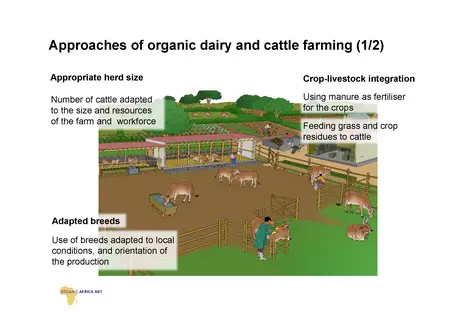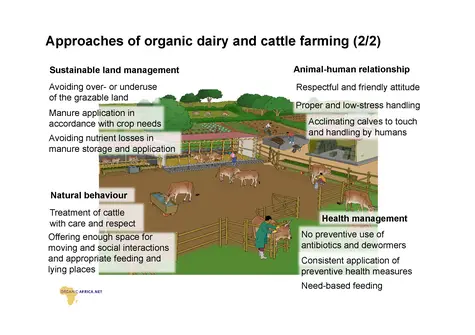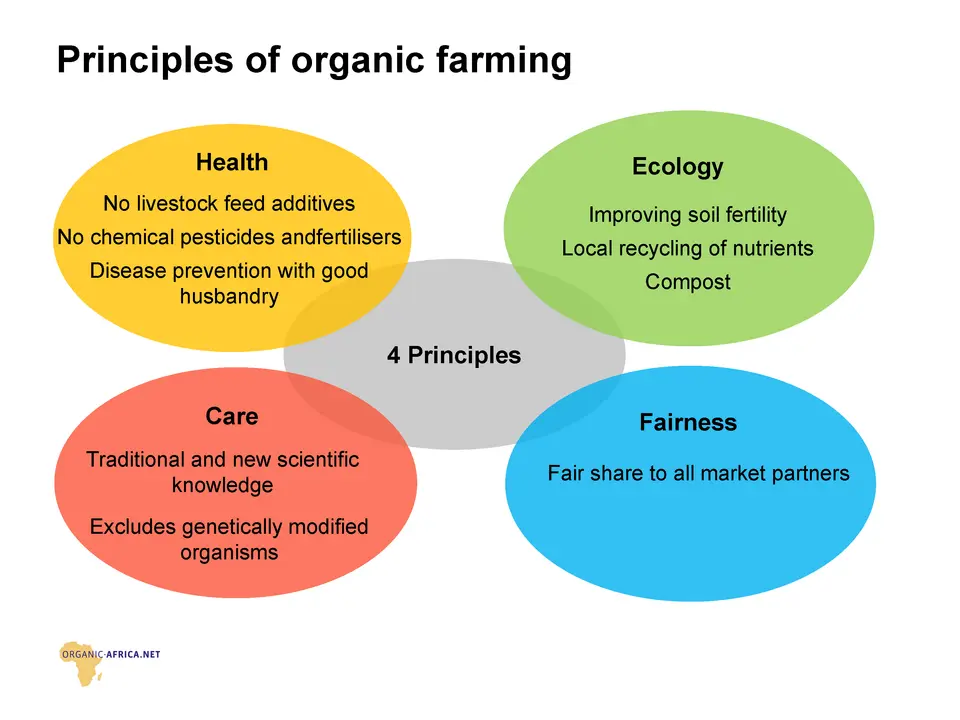General approach to organic dairy and cattle farming
In organic and agroecological animal husbandry, livestock is kept in a way that allows the animals to behave according to their natural needs, stay in good health, and produce healthy food for humans. The production system is, therefore, oriented on the animal's natural environment and needs, this means concretely:
- NATURAL BEHAVIOUR: Cattle are treated with care and respect and can express their natural behaviour. This implies that the cattle are offered enough space for moving and social interactions with other cattle, and ruminant-adapted and need-based feeding is done in sufficient quantities to enable natural growth and good health.
- ANIMAL HEALTH: Antibiotics are not given preventively, e.g. as growth promoters, but are only used in case of a verified need to restore health and prevent suffering and death of the animals. In health management in general, preventive measures are given high attention to minimise the need for curative interventions. Natural methods and substances are given priority over synthetic medicines (e.g. for the control of endoparasites), if their efficiency has been proven.
- BREEDS: The use of breeds that are adapted to local climate, production conditions of the farm, and orientation of the production are favoured. For instance, since it is difficult to ensure enough energy- and protein-rich feed in a grass- and roughage-based diet, very large and high-producing dairy cattle breeds are mostly not appropriate in agroecological cattle farming. Besides the issue of nutrition, these highly productive cattle can be more susceptible to diseases and parasites and require high-level management. Farmers should keep in mind the overall objective of the farm when choosing a breed. Artificial insemination is allowed.
- CROP-LIVESTOCK INTEGRATION: The integration of cattle into the farm system is important in agroecological farming (crop-livestock integration). It allows the minimisation of dependence on external inputs and “closed” nutrient cycles on the farm. Livestock produces valuable manure that can be used as fertiliser for crop production or as fuel for heating. Cattle are ruminants and can therefore digest grass and other plants such as crop residues that are not edible to humans into valuable products for human consumption. The feed ration of agroecological cattle consists mainly of grass and roughage. Concentrated feeds (e.g. feeds containing a large proportion of grains) that are not natural to ruminants should be minimised.
- HERD SIZE: The number of cattle on a farm should be adapted to the size and resources of the farm, the amount and type of feed available and the available workforce. Agroecological cattle husbandry requires a lot of labour since the feed is mainly produced on the farm, the housing is cleaned regularly, and daily animal observation is an integral part of animal management. These are some of the reasons why organic farms may have lower herd sizes than conventional farms.
- SUSTAINABLE LAND MANAGEMENT: Agroecological cattle farming aims at a sustainable use of natural resources, maintenance of soil fertility, and avoidance of damage to nature. Therefore, grazing and manure application are adapted to the conditions of the grazeland. Grazing is managed in a way to avoid over- or underuse of the grazable land to obtain and maintain an optimum productivity of the grass. Manure is applied in accordance with the needs and the development stage of the crop. Storage and application of the manure are done in a way that minimises nutrient losses.
- ANIMAL-HUMAN RELATIONSHIP: The attitude of humans towards cattle should be respectful and friendly. This attitude is rooted in the general respect towards all living creatures and nature. Animals are seen as living beings with feelings and individual needs. An animal-friendly attitude requires a certain knowledge and interest in the needs and natural behaviours of the species. Appropriate behaviour from humans results in a mutual relationship of confidence. This enables proper and low-stress handling of a cow that will be milked on a daily basis and also prevents accidents. This confidence is most easily started with the animals are calves by acclimating them to touch and handling by humans, especially for those destined to be dairy cows.
Note: If a farmer wants the produce to be sold as organically labelled, the whole farm (including crop and livestock production) must be certified and managed according to organic standards. If no certification is wanted or available, a farm can still farm according to organic or/and agroecological principles.



 tap and then scroll down to the Add to Home Screen command.
tap and then scroll down to the Add to Home Screen command.